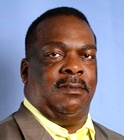
Operators employed in the transit industry continue to experience difficult times in relation to obstructive sleep apnea, a potentially serious sleep disorder in which breathing repeatedly stops and starts during sleep.
Several types of sleep apnea exist, but the most common type is obstructive sleep apnea, which occurs when throat muscles intermittently relax and block your airway during sleep. The most noticeable sign of obstructive sleep apnea is snoring.
The National Transportation Safety Board and the Federal Transit Administration have identified fatigue and undiagnosed sleep apnea as high-risk vulnerabilities for transit operators, and as an element of probable cause for numerous transit accidents.
In 2013, Congress enacted a law prohibiting the Federal Motor Carrier Safety Administration from implementing or enforcing requirements relating to sleep disorders unless adopted by a rule-making proceeding. However, it did not apply to any requirement in force before Sept. 1, 2013, at which time there were guidelines for screening and testing.
Many questions remain unanswered because it seems carrier medical review officers (MRO) are making determinations on employees based on their beliefs, as opposed to actual physical examinations. The only way a respiratory problem can be detected is through a sleep study and an MRO should request a sleep study if he or she believes there is a problem.
There is also the issue of the costs of medical examinations and who is responsible for payment. Physical examinations required by carriers based on Department of Transportation regulations should be paid for by the carrier. Also, a sleep study is no excuse for an operator to be put out of service.
We must seek a resolution to this problem and stand together, shoulder to shoulder, to ensure our members are not being put out of service and to ensure that the carriers assume the cost of any sleep studies performed.
After a sleep study is completed and the diagnosis is indeed sleep apnea, there are treatment options, including continuous positive airway pressure (CPAP) machines, dental devices and surgical options.
As more information becomes available concerning this disorder and DOT guidelines, we will make sure that all of our members are well informed.
Related News
- New Mexico Local 1687 sets new precedent with Red Apple Transit
- SMART-TD Transit Union welcomes FTA’s historic directive to combat operator assaults
- Bus operator summons SWAT team in LA bus hijacking
- SMART-TD celebrates Arizona law that protects transit workers
- SMART-TD Bus Department overcomes obstruction, impresses new operators
- K.C. bus agreement follows SMART-TD’s focus on coaching local officers
- NTS Day 3: America’s transit safer because of union member efforts
- SMART-TD transit union conducts first Bus/Transit Day on the Hill
- Chairperson ensures that new bus members get what’s owed to them
- LACMTA reconstitutes in-agency police force to protect workers, riders